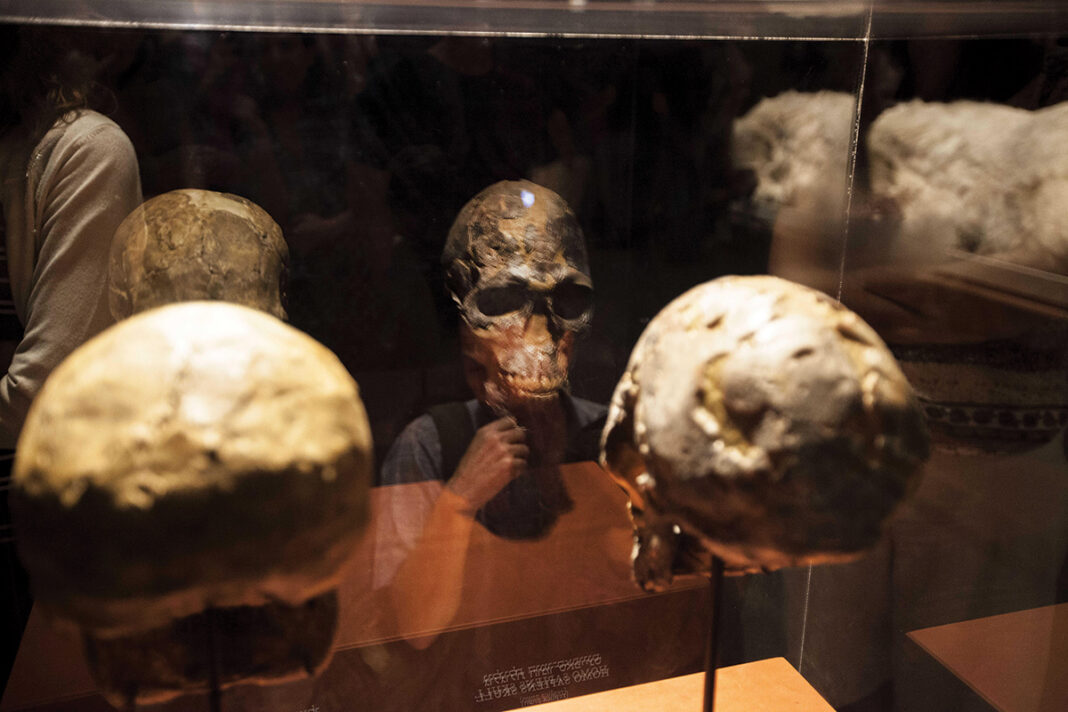It’s a sex-laced mystery. If modern humans didn’t reach Europe until about 60,000 years ago, how has DNA from them turned up in a Neanderthal fossil in Germany from 124,000 years ago?
The answer seems to be that there was a previous migration of early humans – more than 219,000 years ago. One that we’re only just starting to reveal from piecemeal evidence that is DNA extracted from fossilised bones.
The story, as far as we knew it, was that the ancestors of modern humans diverged from Neanderthals and Denisovans between 550,000 and 765,000 years ago. While Neanderthals and Denisovans inhabited Eurasia, modern humans stayed in Africa until about 60,000 years ago. Then they entered Europe, too.
There is ample evidence of breeding between Neanderthals and the ancestors of modern humans some 50,000 years ago. “Everyone knows Neanderthals gave us genes,” says Cosimo Posth at the Max Planck Institute for the Science of Human History in Leipzig, Germany.
Analysis of mitochondrial DNA from a Neanderthal femur found in south-western Germany now adds to evidence that there was earlier interbreeding. The DNA in the energy-producing mitochondria in our cells is different from that in our cell nuclei, and is passed only down the female line.
Puzzlingly, the mtDNA in Neanderthal bones is more similar to that of modern humans than it is to that of the Denisovans.
Posth and his colleagues looked at differences between the mtDNA in this femur and in other Neanderthals, and used mutational rates to calculate that the bone is 124,000 years old. The approach also indicates that this Neanderthal split from all other known Neanderthals sometime between 316,000 and 219,000 years ago. Yet it still contains key elements of early human mtDNA.
This means that modern human ancestors must have interbred with Neanderthals before 219,000 years ago Ð and hence could have migrated out of Africa and into Europe much earlier than we thought.
Cultural swaps
“We are realising more and more that the evolutionary history of modern and archaic humans was a lot more reticulated than we would have thought 10 years ago,” says team member Fernando Racimo of the New York Genome Center. “This and previous findings are lending support to models with frequent interbreeding events.”
The team says an earlier migration event is also compatible with evidence of archaeological similarities between Africa and western Eurasia. “It would be interesting to analyse multiple lines of evidence of possible connectivity between continents and see if there was potential contact that spread not only genes but also cultural information,” Posth says.
The results also suggest that Neanderthals had a much greater genetic diversity and larger population than we realised.
This study broadens our view, from the genetic perspective, of who the Neanderthals were as a species, says Toomas Kivisild at the University of Cambridge. “Previous work based on more than a dozen Neanderthal samples whose mitochondrial DNA had been sequenced has portrayed Neanderthals as a species of very low effective population size and genetic diversity,” he says.
More: We may have mated with Neanderthals more than 219,000 years ago | New Scientist























